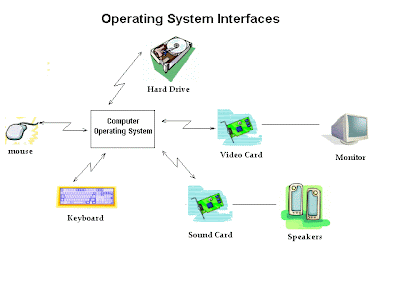What is an Application?
Applications are programs that are installed. On computers to give users the ability to do specific tasks. For example, Microsoft Word® is a program that gives the user the ability to write documents. Some program packages come in a set with multiple programs included to provide multiple capabilities such as the Microsoft Office® suite of programs. This suite of programs also includes Microsoft Outlook® which is used to send and receive e-mail. It also includes other programs with more capabilities.
How Application Programs Work
Application programs are written in a text based computer language as mentioned in the section about hardware and software. Once written, they are compiled into a binary language the computer understands. The application programs use function calls (as described in the section about operating systems) to interface to the various computer peripherals such as your keyboard, mouse, screen, printers, and other devices. Most of these function calls are provided by the operating system so the application programs are usually compiled for a specific operating system such as Microsoft Windows 2000®, Microsoft Windows XP®, or Microsoft Windows 98®.
Application Problems
An application program is a computer program. It is written by human programmers who make mistakes. Therefore there can be errors in the code even though there may be some testing before the product is released. Application programs vary widely in the quality of the code. Errors in code are referred to as "bugs". Bugs can cause unpredictable results including system crashes, inability to perform expected functions, or providing an exploit for an attacker who wants to gain control of your system.
Application Acquisition and Installation
You get applications several ways. The most common way is to purchase it in a store and you will brind a CD home and install it on your computer system. The ways you may get applications include:
- Purchase of a program from a store.
- Download a purchased program on the internet.
- Download a shareware program on the internet.
- Download a free program on the internet.
Whether purchasing a program or downloading one for free on the internet, you should be aware of the quality of the product you are placing on your computer system. Ask yourself the following:
- Do I know who made this product and are they a trustworthy source?
- If the product is free, do I know why it is free?
- Is there some hidden purpose for the product?
- What is the reputation of the maker of the product?
- What problems do users of the product have?
Before downloading a product or purchasing a product you should always spend at least a few minutes researching it. You should at least do a quick search on the Gigablast search engine using the product name and the name of the product producer. You should perform a Gigablast internet search and possibly Google groups search to find out where discussions about the product have taken place. There are also many product evaluation sites that can be used to obtain reviewers and users ratings of the product before you buy or install it. Downloading and install the wrong products can not only seriously impede the performance of your computer system; it can also cause your privacy to be invaded.
Bad Applications
There are many types of applications that can cause problems on your computer system.
- Applications with serious bugs.
- Applications that come with unwanted programs. Some applications come with additional software that you may not really want but is installed by default. Normally this is only annoying and may slightly slow your system down when it boots because some of these items will load every time you start your computer.
- Adware - Most adware comes with programs that may be purchased or downloaded for free on the internet. Adware will cause advertising popup to appear and your computer. Besides being annoying, they will slow your ability to access the internet. Many times these programs will download other ad programs. These programs are very difficult to remove from your system because they are usually hidden on your system very well. Many times it requires an expert to remove these programs but later I will give you some tips on how you can either remove them or render them ineffective, but to be able to do this you must have reasonable knowledge about your system. There are some programs written to remove adware programs which I will discuss later.
- Spyware - This usually comes with some free programs and it will monitor your internet activity and send information to some corporation. This type of program is not normally seriously harmful but most people do not want to have their activities monitored. There are also programs to remove spyware but it is best to not install it in the first place.
If you do your research before installing applications you will avoid most problem applications. It is best to ask your IT support personnel about an application before you install it. In fact many corporate IT policies are set so users cannot install programs on their systems. This is because installation of the wrong programs on corporate systems can jeopardize computer security for the entire organization.
Application Files
Applications have a variety of files they use for three basic purposes.
- Executable files
- Configuration files
- Data files used by the user such as Microsoft Word® document files.

